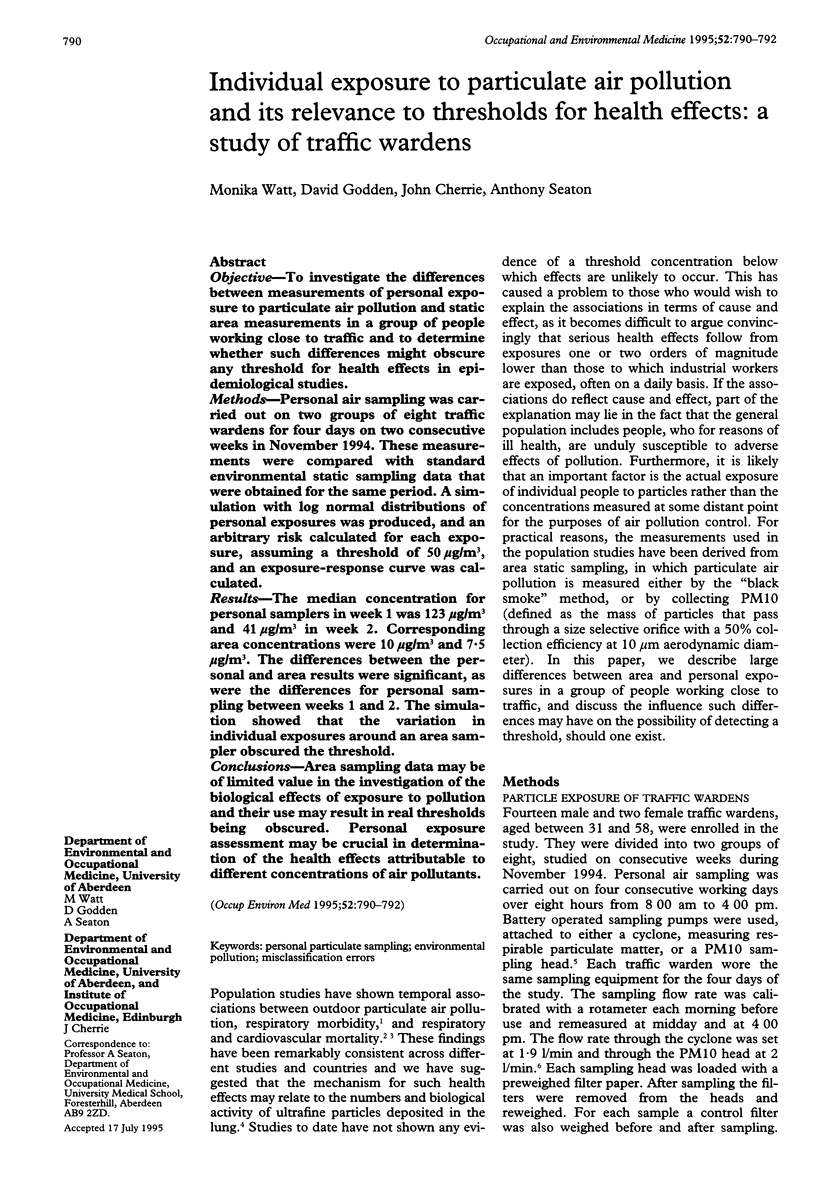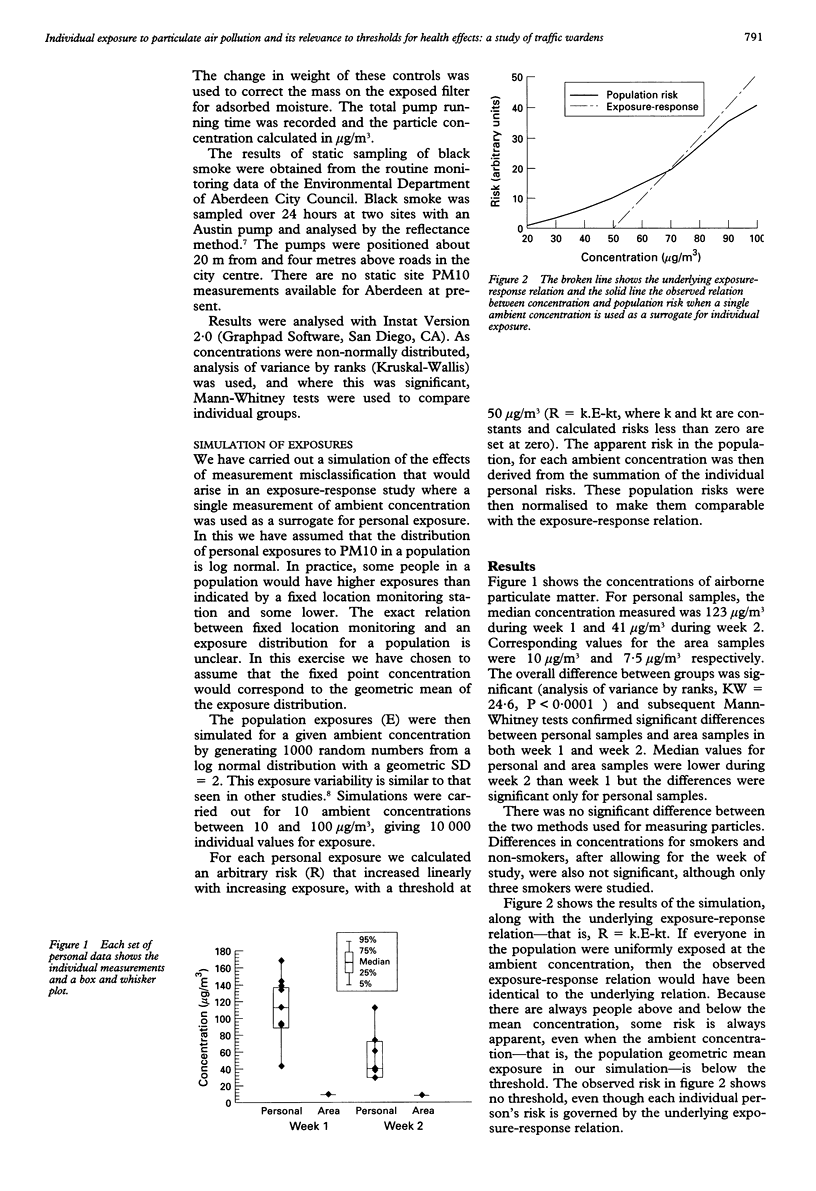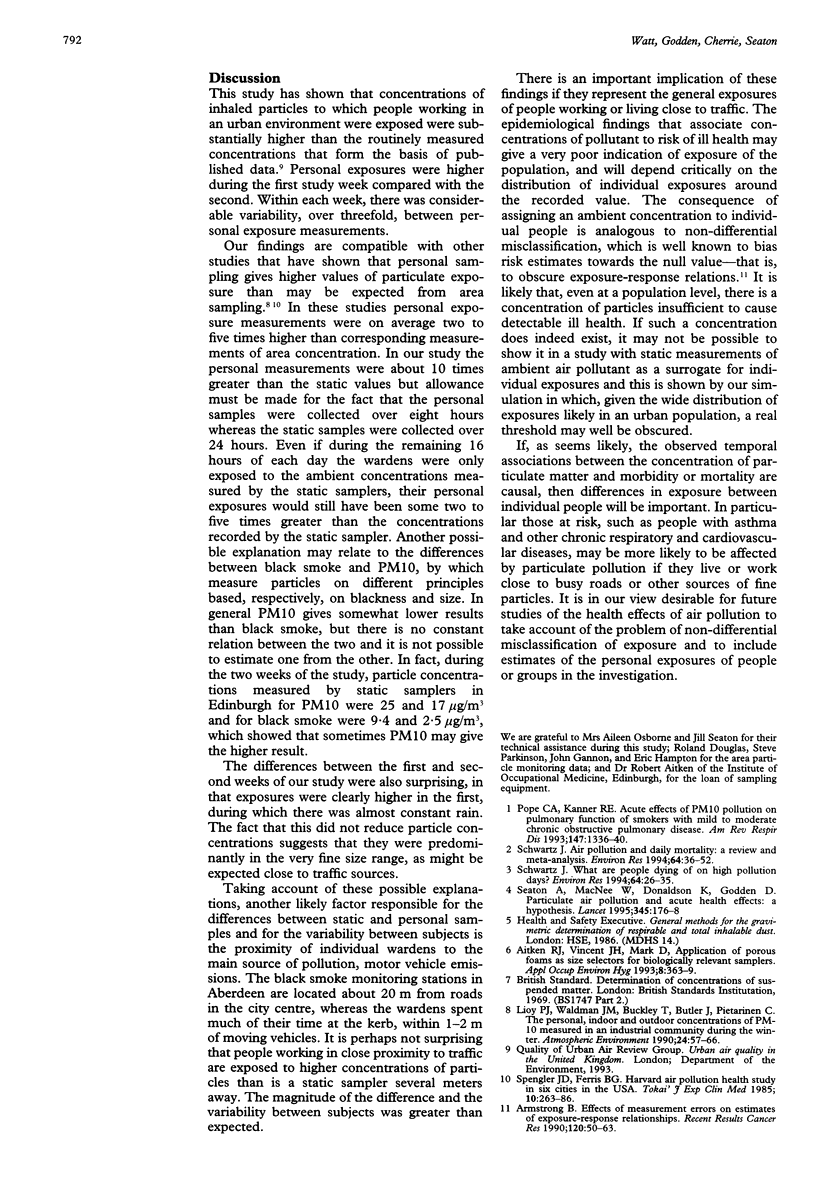Abstract
OBJECTIVE--To investigate the differences between measurements of personal exposure to particulate air pollution and static area measurements in a group of people working close to traffic and to determine whether such differences might obscure any threshold for health effects in epidemiological studies. METHODS--Personal air sampling was carried out on two groups of eight traffic wardens for four days on two consecutive weeks in November 1994. These measurements were compared with standard environmental static sampling data that were obtained for the same period. A simulation with log normal distributions of personal exposures was produced, and an arbitrary risk calculated for each exposure, assuming a threshold of 50 micrograms/m3, and an exposure-response curve was calculated. RESULTS--The median concentration for personal samplers in week 1 was 123 micrograms/m3 and 41 micrograms/m3 in week 2. Corresponding area concentrations were 10 micrograms/m3 and 7.5 micrograms/m3. The differences between the personal and area results were significant, as were the differences for personal sampling between weeks 1 and 2. The simulation showed that the variation in individual exposures around an area sampler obscured the threshold. CONCLUSIONS--Area sampling data may be of limited value in the investigation of the biological effects of exposure to pollution and their use may result in real thresholds being obscured. Personal exposure assessment may be crucial in determination of the health effects attributable to different concentrations of air pollutants.
Full text
PDF


Selected References
These references are in PubMed. This may not be the complete list of references from this article.
- Armstrong B. Effects of measurement errors on estimates of exposure-response relationships. Recent Results Cancer Res. 1990;120:50–63. doi: 10.1007/978-3-642-84068-5_4. [DOI] [PubMed] [Google Scholar]
- Pope C. A., 3rd, Kanner R. E. Acute effects of PM10 pollution on pulmonary function of smokers with mild to moderate chronic obstructive pulmonary disease. Am Rev Respir Dis. 1993 Jun;147(6 Pt 1):1336–1340. doi: 10.1164/ajrccm/147.6_Pt_1.1336. [DOI] [PubMed] [Google Scholar]
- Schwartz J. Air pollution and daily mortality: a review and meta analysis. Environ Res. 1994 Jan;64(1):36–52. doi: 10.1006/enrs.1994.1005. [DOI] [PubMed] [Google Scholar]
- Schwartz J. What are people dying of on high air pollution days? Environ Res. 1994 Jan;64(1):26–35. doi: 10.1006/enrs.1994.1004. [DOI] [PubMed] [Google Scholar]
- Seaton A., MacNee W., Donaldson K., Godden D. Particulate air pollution and acute health effects. Lancet. 1995 Jan 21;345(8943):176–178. doi: 10.1016/s0140-6736(95)90173-6. [DOI] [PubMed] [Google Scholar]
- Spengler J. D., Ferris B. G., Jr Harvard Air Pollution Health Study in six cites in the U.S.A. Tokai J Exp Clin Med. 1985 Aug;10(4):263–286. [PubMed] [Google Scholar]


